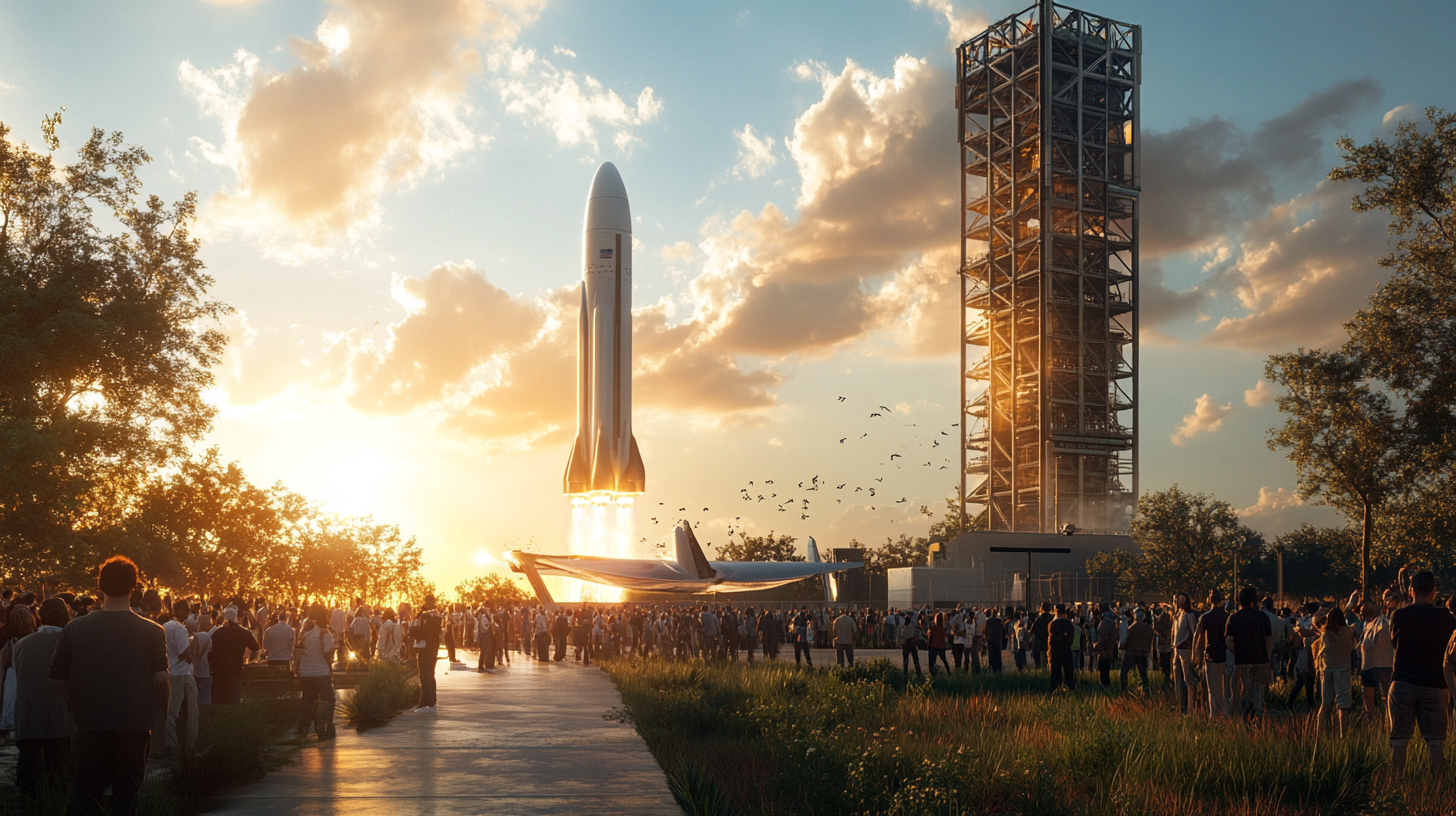SpaceX Makes History with Starship Booster Catch, Causing Ripples in South Texas
SpaceX has made headlines with a groundbreaking achievement during its Starship Flight 5, where it successfully caught and retrieved the Super Heavy booster using the launch tower’s “chopstick” arms. This unprecedented event occurred on October 13, 2024, at SpaceX’s Starbase in South Texas, marking a vital step toward fully reusable spacecraft, a technological leap that promises to impact space travel and the Rio Grande Valley community profoundly.
A Milestone Moment
The Starship, an enormous 400-foot-tall rocket, was launched from the South Texas site at 8:25 a.m. EDT, capturing the world’s attention with its advanced engineering. Approximately seven minutes post-liftoff, the booster stage made a precise landing back on its mount, completing one of the most exacting feats with apparent ease.
“It’s a day for the engineering history books,” proclaimed SpaceX manager Kate Tice, expressing the exhilaration felt during the live commentary. The retrieval demonstrated SpaceX’s significant advancements toward their goal of fully and rapidly reusable spacecraft.
Local Significance and Response
In the heart of South Texas, this technological triumph has broader implications beyond the aerospace industry. It signifies a potential economic revival for the Rio Grande Valley (RGV), a region poised to benefit from increased investments and job opportunities related to the burgeoning space industry. Valley residents, who have witnessed the construction and expansion activities at Starbase, now stand on the cusp of being part of a global narrative in space exploration.
RCV econonomist, Dr. Teresa González, highlighted the significance of this event, stating, “This success story has put RGV on the global map for space exploration. The opportunities for economic development and educational advancements for our community cannot be overstated.”
Context and Community Involvement
The Rio Grande Valley has had a front-row seat to SpaceX’s endeavors since the establishment of their Starbase operations. The journey towards this success has seen transformational changes in the local landscape, with many community members gaining employment directly with SpaceX or in auxiliary services supporting the industry.
Local leaders have voiced strong support for SpaceX’s presence. Cameron County Commissioner, Carlos Villarreal, remarked, “SpaceX’s achievements align with our vision of technological progress and sustainable development for South Texas. The company’s commitment has fostered immense pride and optimism in the Valley.”
Advancing Space Exploration
Beyond the immediate impact on the local community, Flight 5 serves as a critical test in making space travel more sustainable. The broader objective for SpaceX involves using Starship to facilitate human exploration and potential colonization of celestial bodies like the Moon and Mars. In this ambitious project, NASA partners with SpaceX under the Artemis program, which could see astronauts using Starship as a lunar lander by 2026.
Elon Musk, SpaceX’s CEO, underscored the mission’s success by envisioning a multiplanetary future — a dream that now seems one step closer to reality. “This achievement is a big step towards making life multiplanetary,” Musk commented, echoing his longstanding vision.
Achieving with Innovation
The technological success of Flight 5 involved overcoming numerous challenges. Significant upgrades, particularly the reworked heat shield that required over 12,000 technician hours, were key components ensuring the mission’s success. Additionally, iterating through tests exemplifies SpaceX’s engineering philosophy aimed at rapid improvement and innovation.
Despite the achievement, SpaceX’s journey has not been devoid of obstacles. Delays in receiving approvals from the U.S. Federal Aviation Administration (FAA) due to environmental review processes had previously postponed the launch. SpaceX has articulated its frustrations, seeing such bureaucratic processes as hindering progress.
Diverse Perspectives and Future Implications
While the success is universally celebrated, some critics remain wary of the increasing corporate footprint at Boca Chica and its potential environmental impacts. Balancing such concerns involves ongoing dialogue between SpaceX, governmental bodies, and local stakeholders to ensure that technological and economic ambitions align with sustainable practices.
Looking forward, SpaceX’s accomplishments are set to inspire educational initiatives within RGV, drawing students toward STEM fields and potentially revolutionizing local academia with projects related to space research and technologies.
Resources and Community Engagement
For those interested in learning more or engaging with space exploration initiatives, local institutions like the South Texas Astronomical Society offer programs and workshops. Additionally, SpaceX plans to host community days at Starbase, providing residents a closer look at their operations and achievements.
In conclusion, SpaceX’s Starship Flight 5 not only marks a triumphant chapter in space travel but also underscores South Texas’s integral role in shaping the future. As the local community embraces this new era, the prospects for economic growth, educational advancement, and regional development remain brighter than ever, reflecting the RGV’s position at the forefront of a global journey into space exploration.







